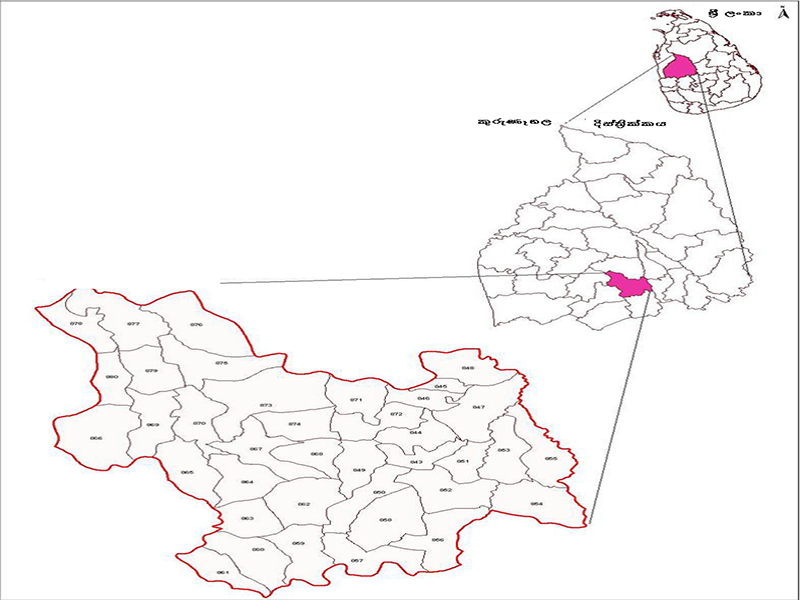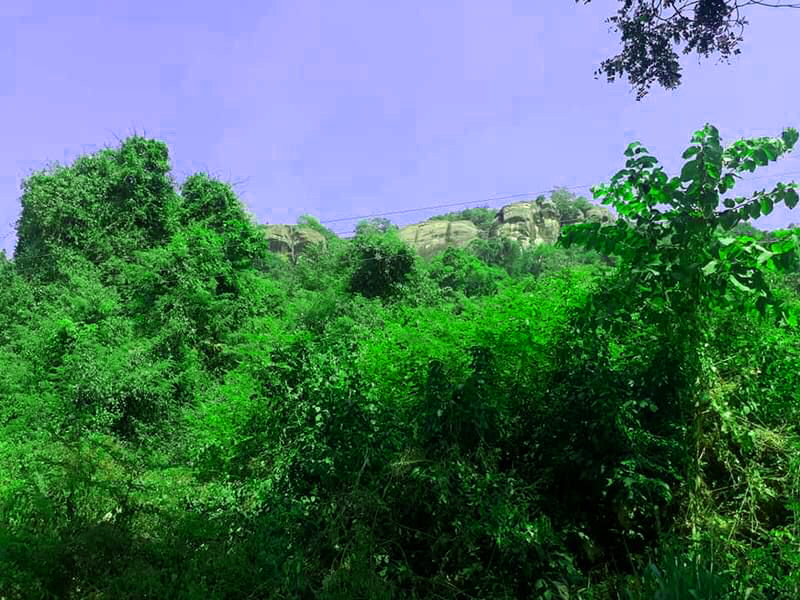Welcome to the ‘Veeraambugedara Heritage Series’, where we’ll delve deep into the heart of Sri Lankan heritage. Over this articles, we’ll explore the rich history, customs, and traditions of the Veeraambugedara village in the southern part of the Kurunegala District, North Western Province. With 38 Grama Niladhari Divisions and 122 villages, each boasting its own unique cultural legacy, prepare to uncover the significance of ancient rituals, modern-day celebrations, and the vibrant community spirit that defines this fascinating region.
The Veeraambugedara village covering an area of 96.183 square kilometers (equivalent to 23,757.28 acres or 9,618.33 hectares). Comprising 38 Grama Niladhari Divisions and 122 villages, and population of 36,628 people . The demographic makeup is predominantly Sinhalese, accounting for 99.23% of the population, while a small minority represents other ethnicities and the Buddhism is the dominant religion.
With its generally flat terrain, the Veeraambugedara is dotted with several hills that rise above ground level, adding to the region’s natural charm. Rich in natural resources like limestone and clay.
The region’s economy is primarily driven by agriculture, with coconut and paddy cultivation being the mainstays. Its agricultural productivity is largely dependent on a network of 20 reservoirs and 23 tanks, supplemented by rainfall. The Kolamune and Maguru Oya rivers, flowing north to south, further contribute to the region’s water resources. The area experiences a tropical climate with an average annual temperature of 29.66°C and an average annual rainfall of 149.5 mm. High humidity levels, averaging 70.67% in 2017, contribute to the region’s agricultural suitability.
Local folklore offers intriguing tales about the origins of the name Veeraambugedara. According to village elders, the name is linked to a legendary local hero who once resided here. It is believed that the hero had two wives, and hence the place came to be known as ‘the hero’s wife’s house’. Over time, the name evolved into its current form due to phonetic changes. Artifacts said to have belonged to this hero, such as a sword, dagger, and betel box, are preserved in the Viharahena temple within the neighboring Bamunakotuwa village serving as tangible reminders of the region’s rich history.
As ancient and valuable sites within the Veeraambugedara these landmarks offer a window into the region’s rich historical heritage.
Huruggamuwa Ancient Temple
Ruwangiri Kanda Walagamba Ancient Temple
Seruwagala Ancient Temple
Algama Sangharaja Raja Maha Viharaya
Madawala Sri Shailabimbarama Viharaya
Veherabedda Ancient Temple
These temples hold significant cultural and historical importance and can be introduced as key religious landmarks.
When considering the origins of the Huruggamuwa Ancient Temple, examining the land donation records reveals that a paddy field was donated in the name of Ahelapola Dhammananda Rala during the reign of King Rajasinghe. This donation was the result of resolving a dispute related to the land, which was eventually offered to the temple. The inscription found near the stupa indicates the way in which the name of the Huruggamuwa village was formed. Additionally, a carving of a dog near the stupa illustrates the consequences of misusing monastic property, symbolizing the karmic results of such actions.
About 150 meters above the temple, there is a rock formation where a sacred cave can be found. The temple, built in 1924, features paintings that, upon study, reveal a connection to the Kandy period. These historical artworks provide insight into the cultural and artistic heritage of that era.
The historical background of the Ruwangiri Kanda Walagamba Ancient Temple, dating to the time of King Valagamba, reveals fascinating details. According to tradition, the temple is home to a sacred golden Buddha statue and a Bodhi tree, both said to have been offered by the arahants Kassapa, Mitasaka, and Culla Pinnadapatika. Local lore also mentions that the ponds near the temple were once used by King Valagamba for bathing and later utilized by the arahants, further deepening the site’s religious and historical importance.
The Seruwagala Ancient Temple holds significant historical and archaeological value. It is located atop an expansive black rock plain that stretches across nearly 400 acres
The temple’s murals and artwork are considered to belong to the Kandyan era and are of significant historical value. Currently, the site is managed by the Department of Archaeology. The remnants of a royal palace, including stone pillars, are still evident within the temple grounds, supporting the belief that the site may have once served as a royal residence.
When examining the history of the Weheragala Ancient Temple, one finds a Brahmi inscription on a rock slab located on an elevated plateau near the secluded Weherabedda village. The inscription, approximately 4 feet by 2 feet by 6 feet in size, is composed of ancient Brahmi characters. Additionally, a naturally formed pond to the north of the stupa is believed to have been used by the local community in ancient times, and it is said that its water has never dried up. Scattered across the site are remnants, such as stone pillars and foundation stones, suggesting the presence of a royal palace or ancient building. These features, along with the rock inscription, indicate that the site may date back to the early Anuradhapura period.
When considering the history of the Madawala Sri Shailabimbarama Uposatharama Viharaya, it is believed to have originated during the reign of King Vasabha in the 3rd century BC, dating back to the Anuradhapura era. It is further suggested that the site was a renowned honey-gathering location from the 1st to the 5th centuries AD. According to legend, during the Kandyan period, Sangharaja Thero resided in the Sat Korale region, and it is said that the current Buddha shrine at the Madawala temple was constructed during that time.
It is also evident from historical records that the Algama Sangharaja Viharaya holds significant historical value, as it is believed to be the place where the Sangharaja Thero would pause during his alms rounds. This connection to the Sangharaja Thero further emphasizes the temple’s cultural and historical importance. The area is not only historically significant but also geologically fascinating, with its abundant limestone and clay resources supporting various traditional industries, including pottery. The landscape is characterized by its picturesque hills, dense forests, and ancient ruins, which together create a serene and timeless environment.Join us on the Veeraambugedara Heritage Series as we explore the rich history, vibrant traditions, and unique cultural heritage of this remarkable region. Discover the ancient rituals and lively community spirit that make Veeraambugedara a key part of Sri Lanka’s legacy. Stay tuned for an insightful journey into its past and present.



